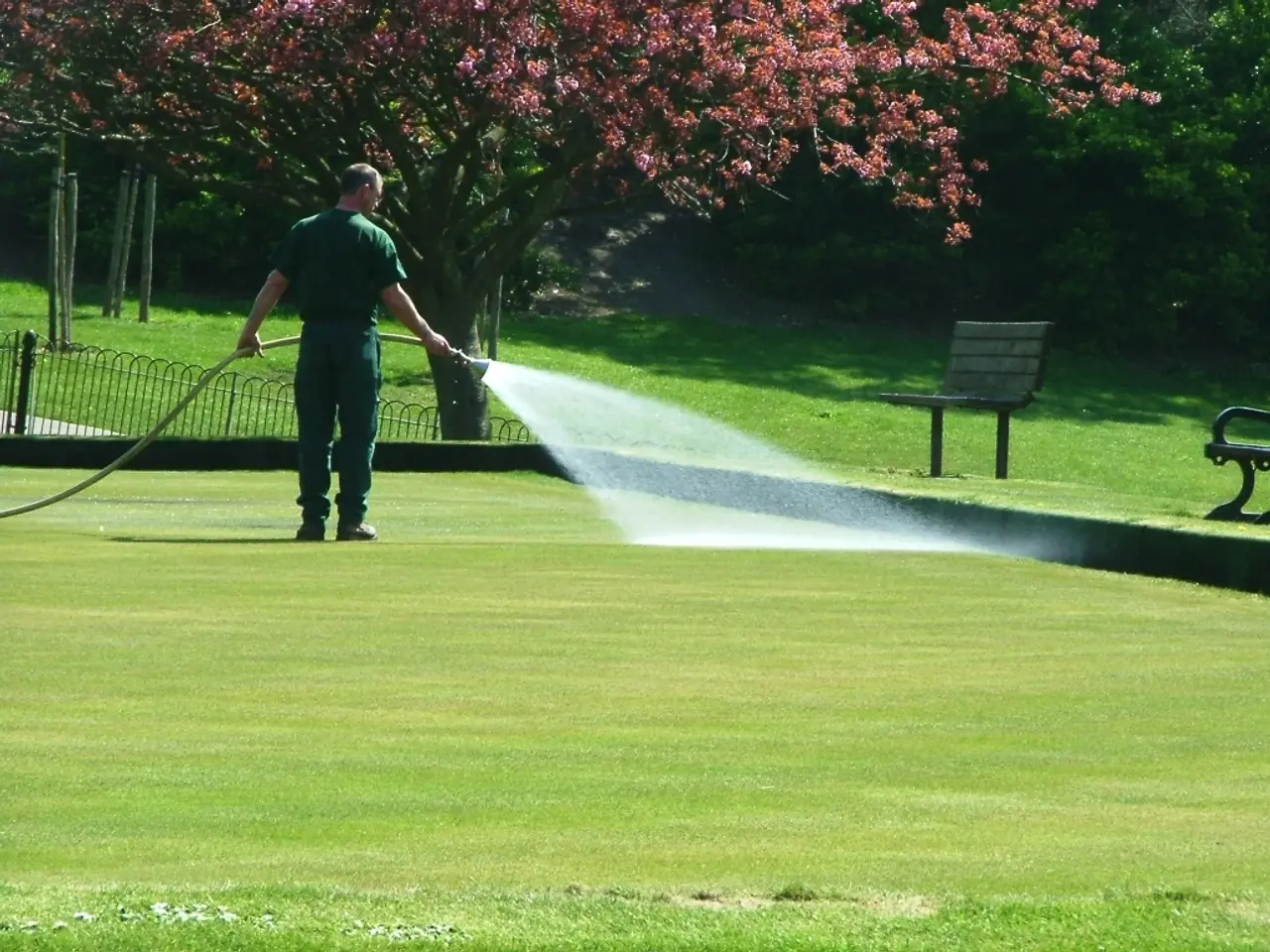Employ Drip Irrigation in Elevated Garden Beds to Yield More Produce with Minimal Resources
==========================================================================================
In this article, we'll guide you through the process of choosing, installing, and winterizing a drip irrigation system for your raised beds. This system is designed to deliver water directly to the roots of your plants, minimizing water splash on foliage and reducing evaporation.
Choosing a Drip Irrigation System
Selecting the right drip irrigation system for your raised beds is essential. Look for systems with suitable components like emitter lines or drip tape specifically designed for raised beds. Essential parts to include are garden hose adapters, automatic timers, backflow preventers, filters, pressure regulators, tubing (1/4-inch and 1/2-inch), emitters, fittings (tees, elbows), tubing stakes, and hose clamps. You may either buy a ready-made kit or assemble parts based on your garden size and plant watering needs.
Installing the Drip Irrigation System
Once you have your system, it's time to install it. Start by planning your layout, measuring raised bed areas, and sketching the positions where tubing and emitters will run. Lay out 1/2-inch mainline tubing from the faucet to the raised beds, using tees and elbows for branching or turns, securing tubing with stakes or clips to keep it in place. After setting up the faucet assembly, including a backflow preventer, filter, timer (optional), fertilizer injector (optional), and pressure regulator, install emitters or drip tape, ensuring water delivery is precise and efficient. Finally, test the system for leaks, clogs, and uniform water distribution.
Winterizing the Drip Irrigation System
To protect your drip irrigation system from winter damage, it's crucial to winterize it properly. Shut off the water supply to the irrigation system and turn off the timer. Drain water from all hoses, tubing, and emitters, either by elevating hoses or using low-pressure compressed air to force out water. Remove and store any removable parts such as timers' batteries indoors. Insulate exposed components like backflow preventers, valves, and connectors with foam covers or insulation material. Disconnect hoses attached to faucets and store them drained for the winter. If unsure, consider hiring professional services to ensure proper winterization without system damage.
In conclusion, by following these steps, you can ensure your drip irrigation system efficiently waters your raised beds during the growing season and is protected against winter damage for longevity. Remember, there are two primary types of drip irrigation systems: rigid drip systems and flexible T-tape systems. Winterizing a raised bed drip irrigation system is necessary in cold weather, as water in the components can freeze and expand, potentially splitting the tubes. In cold climates, it is necessary to winterize the drip irrigation system to prevent damage from freezing water. Happy gardening!
[1] Drip Irrigation for Raised Beds [2] Winterizing Your Drip Irrigation System [3] How to Install a Drip Irrigation System [4] Drip Irrigation for Container Gardens [5] Drip Irrigation for Raised Beds: Pros and Cons
Incorporating a drip irrigation system into your home-and-garden lifestyle could be a beneficial change for your raised bed garden, especially during the summer months. To fully capitalize on the advantages of this system, it's crucial to winterize your drippers to protect them from damage in cold weather.




